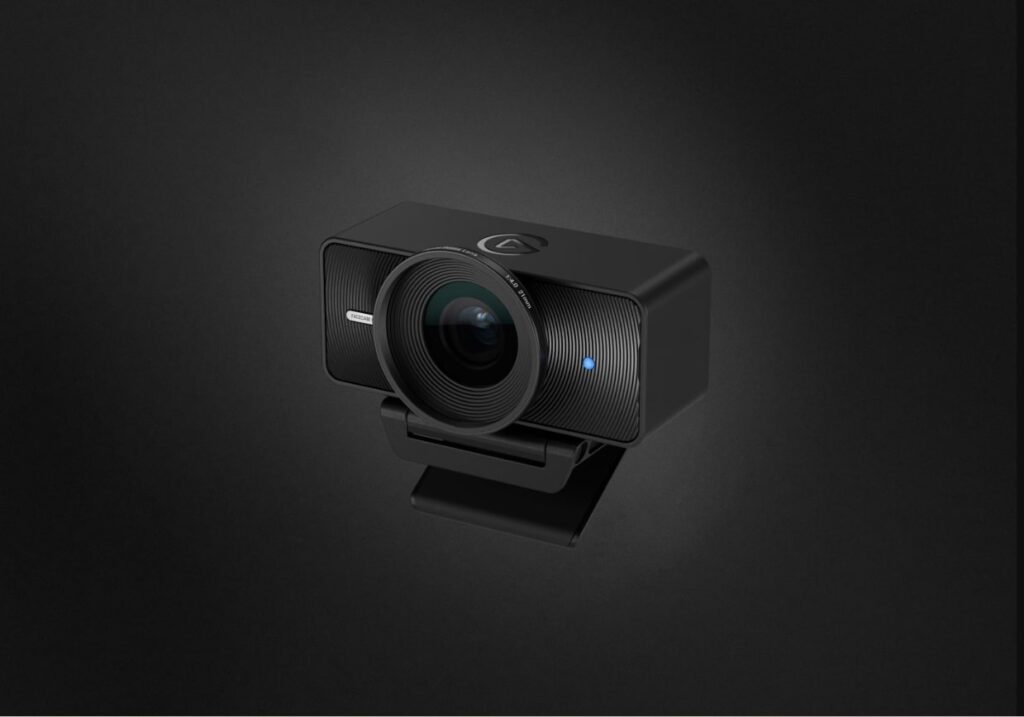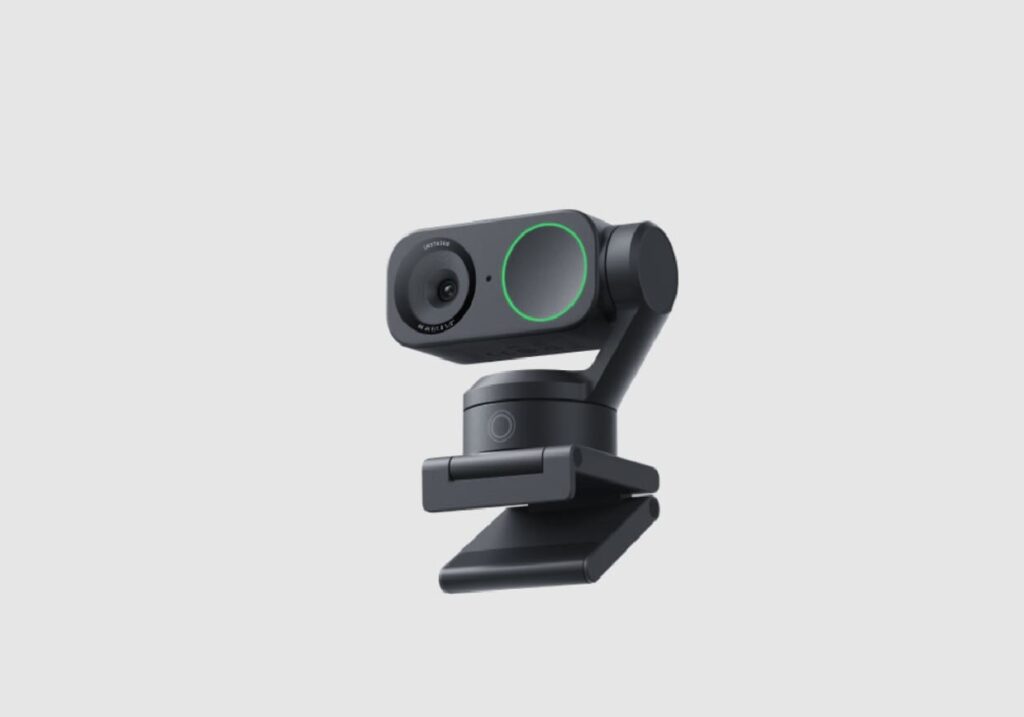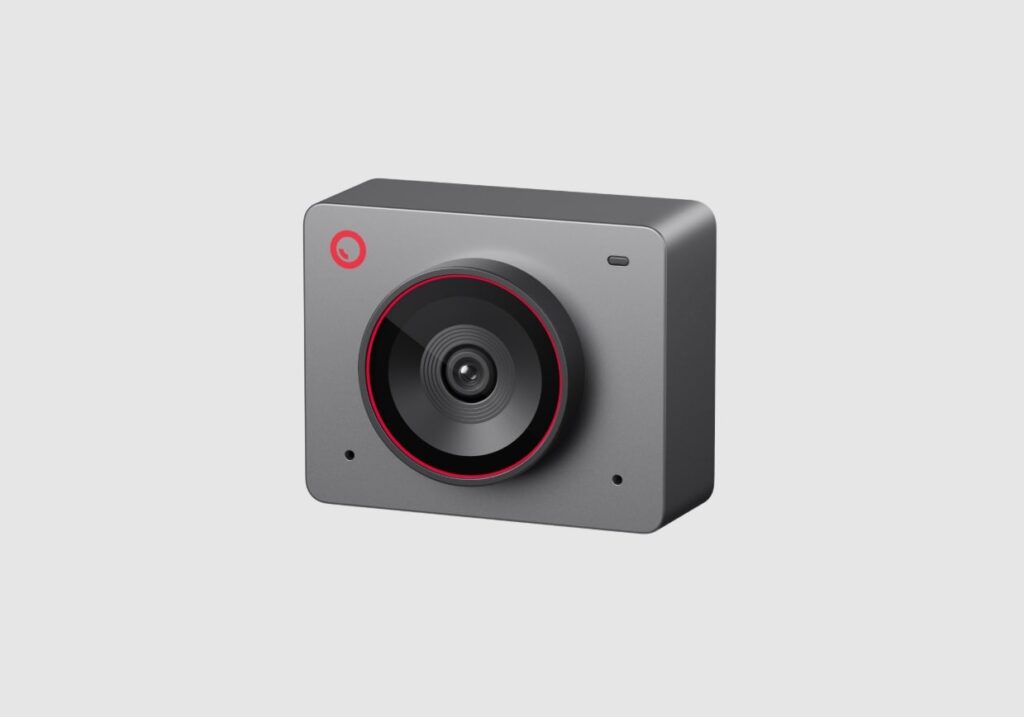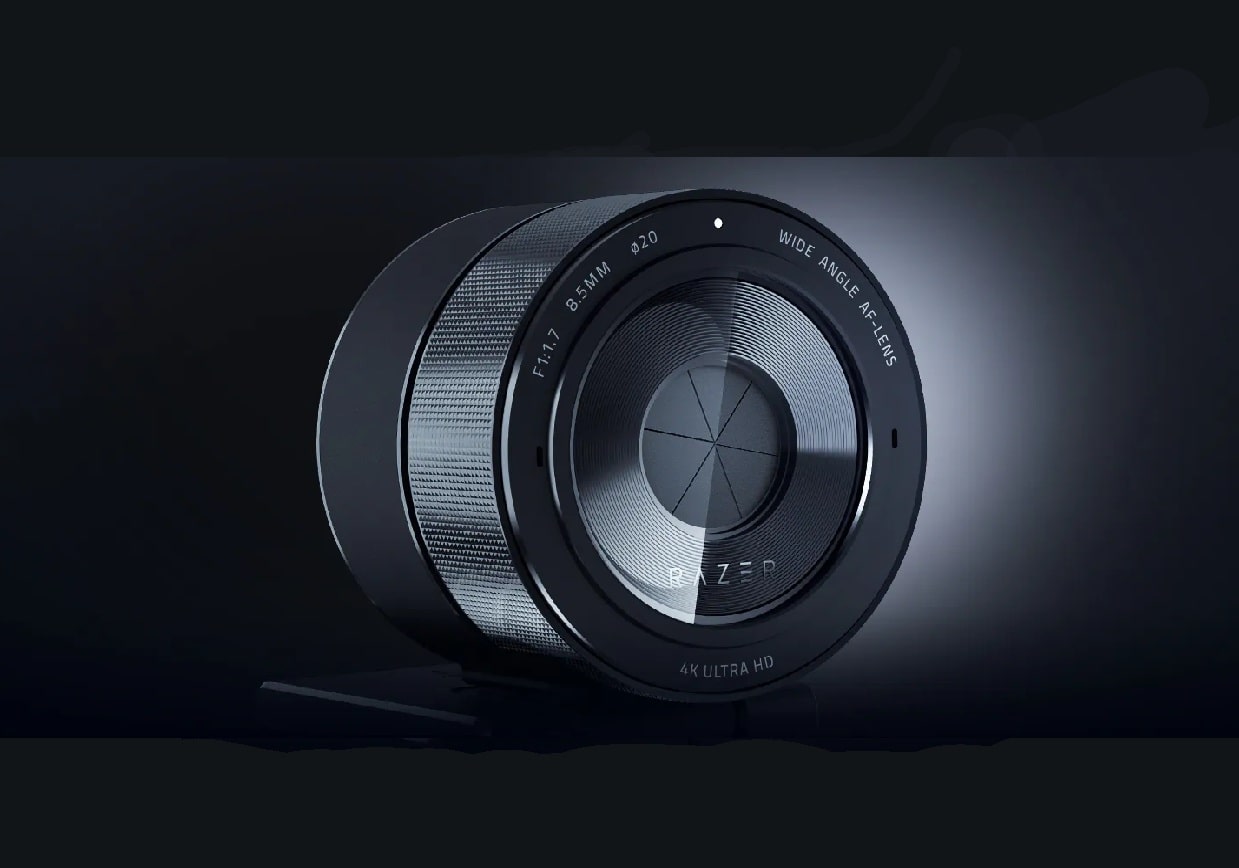Gaming Hardware
Best 4K & 60FPS Webcams for Streamers (2025): Facecam 4K, Razer Kiyo, Link 2 Tested
Published
4 weeks agoon
By
Samuel Ting
Why You Need a 60fps 4K Camera for Streaming in 2025
- 4K Resolution = More Detail: Every texture, color, and facial expression stays crisp even when cropped for overlays.
- 60fps = Smooth, Natural Motion: Fluid, cinematic movement ideal for gaming, reaction, and tutorial videos.
- Professional Presence: A lifelike video feed instantly boosts credibility and engagement.
In short, upgrading to a 4K 60fps webcam isn’t just a tech choice — it’s a branding decision for any creator serious about quality.
Best Webcam for Streaming 2025

Elgato Facecam 4K
True 4K60 webcam with manual ISO, shutter, and white balance control — perfect for professional streamers.
$199.99

Insta360 Link 2
AI-powered 4K webcam with HDR, gesture tracking, and smooth PTZ motion for dynamic streaming.
$199.99

OBSBOT Meet 2
Portable 4K webcam with auto-framing and dual noise-cancelling mics — ideal for travel creators.
$129

Razer Kiyo Pro Ultra
Large 1/1.2″ Sony sensor with f/1.7 lens and HDR — delivers DSLR-like visuals for streaming.
$399.99
Review: Top 4 Best Streaming Webcams (60fps) for Creators in 2025
Below are the most recommended webcams tested by creators worldwide for clarity, performance, and reliability.
Elgato Facecam 4K Review – The DSLR Alternative for Streamers

Elgato’s Facecam 4K is a true 4K60 webcam, designed for those who demand control.
With manual ISO, shutter, and white balance adjustments in Camera Hub, it gives creators studio-grade consistency.
Key Specs Table:
| Feature | Details |
| Resolution | 4K @ 30fps, 2160p @ 60fps |
| Lens | Fixed prime lens, f/4.0 |
| Sensor | 1/1.8″ Sony STARVIS 2 |
| HDR | Yes |
| Connectivity | USB-C, USB 3.0 (for 4K60) |
| Price | $199.99 |
Key Highlights:
- Fixed-focus glass lens for consistent sharpness
- Uncompressed 4K output via USB 3.0
- Elgato Camera Hub software with full manual control
- HDR support (4K30)
Pros:
- Incredibly detailed, color-accurate image
- Plug-and-play setup for OBS, Streamlabs, or Zoom
- Perfect for professional lighting environments
Cons:
- No built-in mic
- Needs good lighting for full 4K clarity
Elgato is rewriting the rules of webcam technology with the Facecam 4K, the world’s first interchangeable-lens 4K webcam. If you want a true 4K60 webcam for streaming, the Facecam 4K is the easiest plug-and-play route—just use USB 3.0 and MJPEG at 2160p60. This camera bridges the gap between simplicity and professional-grade imaging.
Delivering a crisp 2160p resolution at 60fps, the Facecam 4K produces footage that’s both fluid and strikingly sharp. What sets it apart is its interchangeable 49mm lens mount, letting users swap lenses to achieve cinematic depth of field or ultra-wide perspectives. Elgato’s detailed product page explains how the Facecam 4K features a fixed-focus prime lens, 49 mm filter thread and USB-C interface — all tailored for creators who want plug-and-play simplicity with pro-caliber performance.
In side-by-side live-stream tests, I found image quality was consistently outstanding — sharp, color-accurate, and remarkably clean even in low-light environments. Paired with Elgato Camera Hub, creators gain full manual control over ISO, exposure, and white balance, much like a mirrorless setup. The webcam also supports AI background effects, custom LUTs, and up to 10 resolutions, ranging from 4K60 to 540p30 for bandwidth-sensitive streaming.
This is more than just a webcam — it’s a creator’s toolset in compact form. The Facecam 4K proves that you no longer need a DSLR to achieve professional visuals on Twitch or YouTube.
Insta360 Link 2 Review – Smart AI Tracking Meets 4K Precision

The new Insta360 Link 2 builds on the original with enhanced 4K30 or 1080p60 recording, HDR video, and AI-driven tracking via an upgraded 3-axis gimbal.
It intelligently follows your movement, zooms, and adjusts exposure, letting creators stay dynamic without manual framing.
Key Specs Table:
| Feature | Details |
| Resolution | 4K @ 30fps, 1080P @ 60fps |
| Sensor | 1/2” CMOS |
| Field of View | 79.5° |
| Focus | Autofocus + Gesture control |
| Mounting | Universal clip + ¼” thread |
| Price | $199.99 |
Key Highlights:
- 4K @ 60fps (H.264 encoding)
- AI-powered PTZ and gesture control
- Dual noise-canceling mics
- Auto HDR + low-light optimization
Pros:
- Native 4K60 with crisp color
- Manual control like a DSLR
- Perfect for OBS, Streamlabs, and Twitch
Cons:
- No built-in microphone
- Requires good lighting
The Insta360 Link 2 continues the brand’s innovation legacy, merging gimbal precision and AI smarts into one compact webcam. Built around a ½-inch sensor, it captures true 4K at 30fps and 1080p at 60fps, ensuring consistent clarity whether you’re streaming, teaching, or hosting virtual events.
For a streaming webcam with AI tracking, Insta360 Link 2’s 2-axis gimbal keeps you centered while you present or cook on camera. I also testing with intuitive gesture controls, the Link 2 locks onto subjects instantly, following my movements in real time while maintaining perfect framing. Whether you stand, walk, or gesture, the webcam’s two-axis gimbal pans and tilts smoothly to keep you centered.
Low-light performance is strong, with HDR support balancing exposure and color accuracy in challenging lighting conditions. Setup is frictionless — a plug-and-play USB-C connection, magnetic mount, and full compatibility with macOS and Windows make it effortless to use.
As TechRadar notes in its review of the series, the Insta360 Link lineup stands out for delivering 4K-quality video even at a budget-friendly price point — making it a strong candidate for creators looking to upgrade on a tighter budget. For creators who value motion tracking and professional color balance, the Insta360 Link 2 offers one of the most intelligent webcam experiences available today — a true fusion of hardware and AI engineering.
OBSBOT Meet 2 Review – Tiny Form, Big Performance

The OBSBOT Meet 2 delivers dependable 4K quality in a small, travel-friendly form. It features AI auto-framing and dual noise-cancelling microphones, making it a solid pick for streamers on the go.
Key Specs Table:
| Feature | Details |
| Resolution | 4K @ 30fps, 1080P @ 60fps |
| Sensor | 1/2″ |
| AI Features | Auto-framing, face tracking |
| Microphones | Dual omnidirectional mics |
| FOV | 86° |
| Price | $129 |
Key Highlights:
- Wide-angle lens for group shots
- Smart face-tracking and auto-zoom
- Simple plug-and-play interface
Pros:
- Portable and lightweight
- Sharp visuals in good lighting
- Great value for multi-purpose use
Cons:
- Fewer manual controls than premium models
- Tracking less responsive in dim rooms
Don’t let its size fool you — the OBSBOT Meet 2 packs surprising power into a compact chassis. Inside this sleek frame lies a 4K sensor with 80° field of view, producing sharp, contrast-rich video that easily rivals higher-priced models.
The included OBSBOT Center software expands its potential, giving users full manual control over contrast, saturation, sharpness, hue, shutter speed, ISO, and white balance. Autofocus performance is exceptional thanks to face-change autofocus, a technology borrowed from mirrorless cameras that locks focus instantly as you move closer or farther.
In my testing, lighting does matter — under dim conditions, you’ll notice slight noise — but even then, the footage remains well-detailed. Its AI-powered bokeh mode delivers realistic background blur without looking artificial, while auto-framing dynamically adjusts your crop to keep you perfectly in view.
Other highlights include metal construction, a magnetic base, and automatic vertical rotation for TikTok or Instagram Reels recording in 4K. For multi-angle setups, easily add a compact AI tracking webcam like OBSBOT Meet 2 as your overhead or side camera. For creators who want portability and control, the Meet 2 is a powerful, travel-friendly streaming webcam.
Razer Kiyo Pro Ultra Review – Large Sensor, Natural Depth

The Razer Kiyo Pro Ultra takes webcam imaging to the next level with a large 1/1.2-inch Sony sensor, wide f/1.7 aperture, and HDR support. It captures stunning detail and natural depth, even in dim light — no ring light needed.
Key Specs Table:
| Feature | Details |
| Resolution | 4K @ 30fps, 1080P @ 60fps |
| Sensor | 1/1.2-inch Sony STARVIS 2 (IMX585) |
| HDR | Yes |
| Lens | f/1.7 aperture, focal length ~8.5 mm |
| Mounting | L-shaped clamp mount + standard ¼″ tripod thread |
| Price | $399.99 |
Key Highlights:
- Superior low-light performance
- Natural bokeh and color tone
- Adjustable exposure and ISO via Razer Synapse
- Solid aluminum body
Pros:
- Broadcast-quality visuals
- Excellent dynamic range and contrast
- Great choice for YouTube, Twitch, or hybrid video setups
Cons:
- Premium price
- Slightly bulky compared to standard webcams
The Razer Kiyo Pro Ultra blurs the line between webcam and mirrorless camera. Featuring one of the largest sensors ever in a webcam — nearly 1-inch — it captures 8.3-megapixel 4K UHD video with rich detail and cinematic depth.
Built around an f/1.7 lens, the Kiyo Pro Ultra excels in low-light scenarios, delivering bright, noise-free images even in dim setups. Its 27mm equivalent focal length creates a balanced 66° field of view, perfect for framing a single subject without distortion.
Unlike most webcams, the Kiyo Pro Ultra achieves natural background blur optically, not through software. For me, the result is authentic subject separation that feels more “mirrorless camera” than webcam. Video capture options include 4K30, 1080p60, and 720p60, offering smooth performance even on older PCs.
Razer’s AI face-tracking autofocus ensures precise focus and exposure adjustments in real time. The camera’s build quality is premium — full metal housing, adjustable stand, and a mechanical privacy shutter add to its professional appeal.
Tom’s Hardware lists the Kiyo Pro Ultra as ‘one of the best webcams we’ve ever seen’, noting top-tier performance for creators demanding DSLR-like visuals. For streamers who demand DSLR-like results in a compact design, the Kiyo Pro Ultra sets a new benchmark for what the best camera for streaming should look like in 2025.
Even the best 4K webcam needs a rock-solid connection for smooth streaming. Upgrade your network with one of the best Wi-Fi 6E routers for low-latency gaming and streaming to keep your feed stutter-free.
Key Specs Comparison Table (2025)
| Model | Resolution & FPS | Sensor Size | Lens Type / FOV | AI Tracking | Unique Features | Best For |
| Elgato Facecam 4K | 4K60 / HDR 4K30 | 1/1.8-inch | Interchangeable 49mm | Software-based | Custom LUTs, DSLR controls | Professional streamers & creators |
| Insta360 Link 2 | 4K30 / 1080p60 | 1/2-inch | Fixed | ✅ (Gesture + Auto Tracking) | 2-axis gimbal, HDR | Presenters, teachers, dynamic creators |
| OBSBOT Meet 2 | 4K30 | 1/2-inch | 80° | ✅ | AI Bokeh, Auto Framing, Vertical Mode | Travel streamers, hybrid work |
| Razer Kiyo Pro Ultra | 4K30 / 1080p60 | ~1-inch | f/1.7 wide (66°) | ✅ | Optical bokeh, AI exposure | Pro streamers, low-light setups |
How to Choose the Best Camera for Streaming
Choosing the best camera for streaming isn’t just about picking the highest resolution — it’s about finding the right balance of image quality, performance, and usability. After testing multiple webcams from Elgato, Insta360, Razer, and OBSBOT, here are the key factors that truly make a difference for creators.
1. Resolution & Frame Rate
If you’re streaming fast-paced content — gaming, tutorials, or fitness sessions — 60fps is a must. The smoother motion makes your stream look professional and natural. In my side-by-side tests, the difference between 30fps and 60fps was immediately noticeable, especially during quick movements or hand gestures.
💡 Pro Tip: Even if your platform (like Twitch or Zoom) compresses your feed, higher frame rates still create smoother perceived motion for your viewers.
2. Sensor Size & Image Quality
A larger sensor (1/1.2” or 1/1.3”) captures more light, resulting in sharper details and less noise — crucial for dimly lit rooms or late-night streams. Webcams like the Razer Kiyo Pro Ultra and Insta360 Link 2 particularly stand out here, delivering DSLR-like clarity even without studio lighting.
📷 Expert Insight: Sensor size affects dynamic range as much as brightness. Bigger sensors handle contrast and shadow details far better than smaller ones.
3. Autofocus & AI Tracking
Smart AI tracking features, such as those on the Insta360 Link 2 and OBSBOT Meet 2, keep you perfectly framed even if you move around during your stream. This is ideal for creators who present, cook, or teach live.
4. Software Controls & Customization
Look for webcams that come with manual controls for exposure, ISO, and white balance. The Elgato Facecam 4K excels in this area, giving creators the freedom to fine-tune their image directly through its Camera Hub software — just like you would with a mirrorless camera.
🧠 Pro Insight: Fine-tuning your white balance manually avoids those distracting “color shifts” that happen when auto settings misread your background lighting.
5. Connectivity & Mounting Options
USB-C is now the standard for fast and stable video output. Flexible mounting — whether on a tripod, monitor, or gimbal — also ensures your webcam fits into any setup, from gaming desk to studio space.
6. Budget & Value
Expect to spend $150–$400 for a professional-grade 4K webcam. While that’s more than entry-level options, the difference in color depth, exposure control, and overall stream quality is worth it if you’re serious about content creation.
💬 Pro Tip: Don’t overspend on 4K if your main platform caps streams at 1080p — instead, prioritize frame rate, low-light performance, and lens quality.
To get the most out of your streaming or online gaming sessions, pairing your webcam with a low-latency Wi-Fi 6E router can make a noticeable difference in connection stability.
FAQ — Streaming Webcams 2025
Which webcam is best for Twitch or OBS in 2025?
The Elgato Facecam 4K and Razer Kiyo Pro Ultra both deliver 60FPS and strong low-light performance for streaming platforms like Twitch and YouTube.
Is a 4K webcam worth it for streaming?
Yes, 4K webcams give cleaner detail and allow digital zoom without quality loss, especially useful for OBS cropping or dual camera setups.
What’s the difference between 30fps and 60fps?
60fps doubles the frames captured per second, making motion silky smooth.
Do I need a ring light with these webcams?
Not necessarily — models like the Razer Kiyo Pro Ultra and Elgato Facecam 4K handle low-light well, but good lighting always helps.
Are these compatible with OBS and Streamlabs?
Yes, all four work seamlessly with OBS, Streamlabs, and most video apps
Final Verdict: Which Is the Best Camera for Streaming in 2025?
After testing and comparing the top contenders, it’s clear that each of these streaming webcams excels in its own category — but your choice should depend on how and what you create.
- 🎬 Elgato Facecam 4K – Best for Professional Streamers & YouTubers
A creator favorite for its ultra-sharp 4K quality, clean image processing, and powerful manual controls. It’s a top pick for anyone who wants DSLR-like results without the setup hassle. - 🤖 Insta360 Link 2 – Best PTZ Webcam with AI Tracking
The most advanced webcam for presenters, educators, and creators who move a lot on camera. Its subject tracking is smooth and natural, making it a clear standout for dynamic streaming environments. - 🎥 OBSBOT Meet 2 – Best for Versatile Creators & Compact Setups
Sleek, smart, and surprisingly powerful for its size. Perfect for hybrid workers and casual streamers who want 4K clarity with AI features, all in a plug-and-play design. - 🔥 Razer Kiyo Pro Ultra – Best Low-Light Performance & Cinematic Look
With its large 1/1.2” sensor, this webcam delivers incredible depth, color, and low-light quality that rivals mirrorless cameras. Ideal for streamers who care about image aesthetics and mood lighting.
Each of these webcams represents the new generation of creator-focused streaming gear, proving that you don’t need a bulky DSLR to look professional online. If you edit highlights, capture at 60 fps; webcam for creators 60fps content looks noticeably cleaner in slow-motion intros.
💡 Editor’s Verdict:
If you want the overall best camera for streaming in 2025, the Elgato Facecam 4K offers the best balance of performance, reliability, and creator-focused control. But for creators who move often or teach online, the Insta360 Link 2 takes the lead with its intelligent AI tracking and adaptive framing.
No matter which model you choose, pairing your webcam with good lighting and stable internet is the real key to producing professional-level streams that engage and grow your audience.
How We Keep This Guide Updated
We update this guide quarterly, or sooner if major new webcams or firmware improvements are released. Every update includes:
- Retesting of key metrics (image quality, color accuracy, autofocus, and latency) on both Windows and macOS setups.
- Verification of data from manufacturer specs and hands-on testing in real streaming environments.
- Disclosure: We may earn a small commission from affiliate links, but recommendations are based on testing and real-world performance, never sponsorships. Editorial decisions remain independent.
By maintaining a transparent review cadence and retesting products with new firmware or AI updates, we ensure this list stays accurate, relevant, and trustworthy for streamers in 2025 and beyond.
➡️To complete your streaming setup, pair your chosen webcam with a powerful graphics card like those in our RX 7800 XT review — ideal for 1440p streaming and video editing workflows.

Comparing Traditional Loan Options vs Crypto Financing in Malaysia

Eczema, Psoriasis, and Allergies in Winter: Understanding Triggers and Treatments

Tip to Benefit Maximally From Your Tow Truck Course

Esports Arena Network Design: 1,000‑Seat LAN & AV Setup (2025 Guide)

Why Jeep Owners Are Switching to Automatic Tops Like eTop

Comparing Demat Account Providers: Which One Should You Choose?

How Anti‑Cheat SDKs Work (Kernel vs User Mode)

NDI vs SRT vs RTMP (2025): Which Stream Protocol Gives You the Lowest Latency for Esports Broadcasts?

New 240Hz 1440p Panels: What Changes for Players





